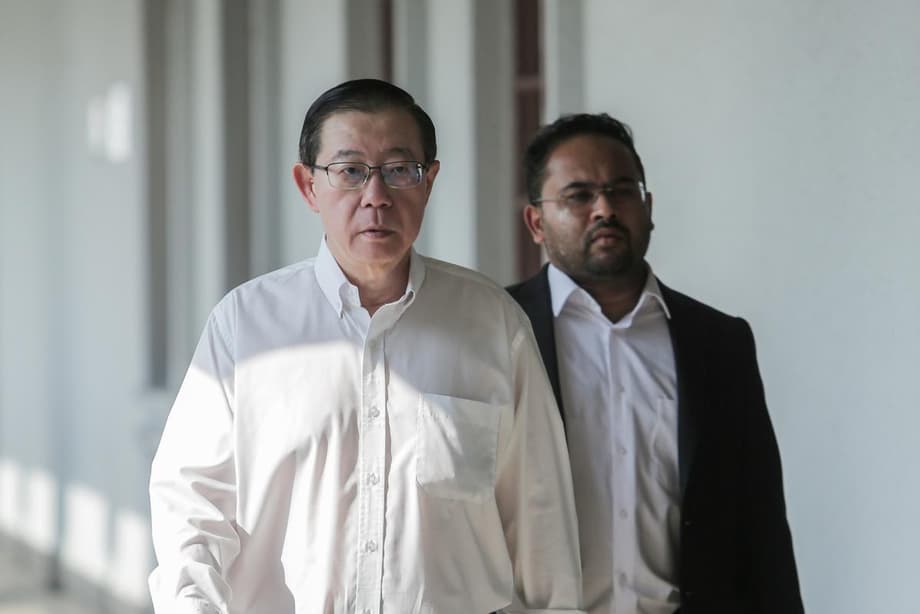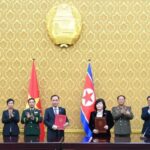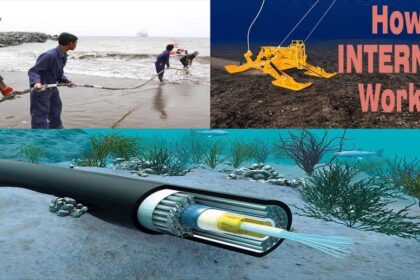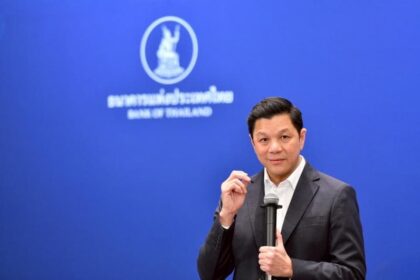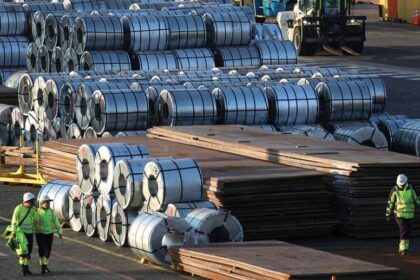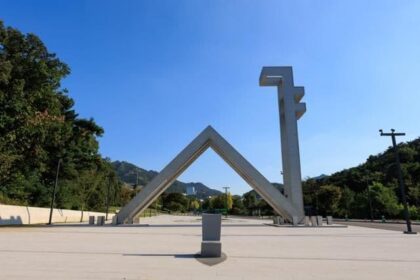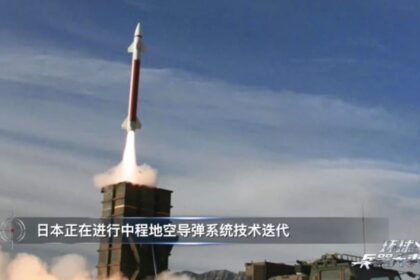A project under scrutiny in Kuala Lumpur court
The RM6.3 billion Penang undersea tunnel and three paired roads project is again under the spotlight after a Malaysian Anti-Corruption Commission investigating officer told the Sessions Court that the deal was steered through direct negotiation, not open tender as claimed by the former chief minister. Senior Superintendent Zulhelmi Ramli testified that his investigation showed the award to Consortium Zenith BUCG Construction Sdn Bhd was arranged through a 2011 memorandum of understanding with Beijing Urban Construction Group, a move he said bypassed transparency standards usually expected for a project of this scale. He also described the exercise as more of a land play than a transport upgrade, alleging that the project facilitated the disposal of valuable state land while kickbacks were sought and paid.
Lim Guan Eng, who led the Penang state government at the time, has pleaded not guilty to all charges. He insists the project followed an open tender, relying on recommendations from state officers, and maintains that he did not solicit bribes. The defense objected to parts of the investigator’s testimony, arguing that opinions on guilt are for the court, not for witnesses. The judge allowed the testimony to proceed at this stage, with the trial continuing before Sessions Court Judge Azura Alwi. The charges trace alleged conduct from 2011 to 2017, while the case itself moved to court in August 2020.
What investigators say happened
The MACC case theory, presented in court through witness testimony and documents gathered from state officials, company personnel and other witnesses, paints a picture of a project that was pre-arranged. Investigators say the state’s public position of pursuing an open tender did not match what actually happened behind the scenes. According to Zulhelmi, Lim’s alleged abuse of position involved assisting businessman Zarul Ahmad Mohd Zulkifli and companies under the Consortium Zenith umbrella to secure the deal, while seeking a 10 percent share of the project profits and later receiving RM3.3 million in cash.
An MOU that predated any tender
The court heard that a memorandum of understanding was signed in 2011 between the Penang government and Beijing Urban Construction Group. Zulhelmi said the MOU made no reference to an open tender and functioned as a direct award. He testified that the MOU came before a request for proposal exercise was launched and before any broader competition could occur. This sequence, he said, diverged from an executive council decision that had called for open tender. Zulhelmi also told the court that Lim arranged for the MOU and that state officers were asked to assist Zarul with the process.
Kickback claims and land disposals
Prosecutors allege that in March 2011, near The Gardens Hotel in Kuala Lumpur, Lim solicited a 10 percent share of profits from Zarul in exchange for helping secure the project. They further allege that Lim accepted RM3.3 million and caused two parcels of Penang state land, valued at RM208.75 million, to be disposed of to companies connected to the project. Testimony in court has linked the land to Ewein Zenith Sdn Bhd, which later developed a waterfront condominium known as City of Dreams. The MACC investigator said his findings indicated a lack of transparency from the outset.
After outlining those findings, Zulhelmi summed up his view of the project in stark terms. Introducing his assessment in court, prosecutors asked why the investigation focused on the movement of land and payments rather than engineering and timelines. He responded that the evidence pointed to an exercise built around land and benefits.
“It was a land scam,” he told the court.
How the defense is pushing back
Lim’s legal team says the project complied with state procurement procedures and that an open tender was used. They contend the RFP process was launched to attract proposals and that evaluations were done by officers, not by Lim personally. Defense lawyers also challenged the investigator’s conclusions, saying any finding on whether a tender was genuinely open falls squarely within the court’s role after it hears all evidence. The court permitted the testimony to continue but recorded the objections.
Objections to investigator conclusions
Defense counsel argued that the witness ventured into opinion and characterization, which should be left to the bench at the end of the trial. Such objections are common in complex corruption cases, where prosecutors try to show patterns and intent, and the defense works to confine witnesses to facts they directly observed. For now, the court is allowing context about how decisions were made, with the weight of that testimony to be assessed later.
Credibility battles around a businessman witness
A key prosecution witness, businessman Datuk Seri G. Gnanaraja, has faced tough questions about his credibility. He had been charged in a separate matter in 2019, later pleaded guilty to a lesser Companies Act offense and paid a fine. More recently, he was reported to be a bankrupt and remains in litigation over debts to former lawyers. Defense counsel highlighted these issues in court and pointed to inconsistencies they say appear in his timeline of events, including the formation of a company and the opening of a bank account. The aim is to cast doubt on his claims about payments and his interactions with Lim.
Bid to drop charges
Last year, Lim’s lawyers submitted a representation to the Attorney-General’s Chambers seeking to discontinue the four charges. They cited what they called contradictions in the record, including evidence about RM19 million that businessman Zarul said he paid Gnanaraja to stop a money laundering investigation tied to the same project. The defense has argued that the contradictions weaken the case and should lead to the charges being withdrawn. Proceedings continued while prosecutors considered the representation.
Key witnesses and their stories
Zarul, who led the Consortium Zenith companies involved in the project, is central to the prosecution’s narrative. In court he acknowledged that he felt indebted to Lim for the award and admitted that he tried to shield the politician from investigation. He told the court that he instructed staff to prepare dummy invoices to disguise payments and that he paid RM19 million to Gnanaraja, who he believed could help stop a probe under the Anti-Money Laundering, Anti-Terrorism Financing and Proceeds of Unlawful Activities Act (AMLA). Zarul said these steps were taken out of a desire to protect Lim.
He also expressed a personal hope about the outcome. After explaining that his cooperation came only after investigators confronted him with documents, he said he did not initially want the case to touch Lim.
Zarul told the court: “I hoped he would be acquitted.”
Another MACC officer, Eng Heng Jun, addressed defense suggestions that investigators pressured witnesses to implicate Lim. Eng told the court that Zarul’s references to Lim arose during a separate inquiry into Gnanaraja and that a formal complaint about Lim in early 2020 led to opening a new case file. Lim was charged in August that year.
A vivid account of cash deliveries in 2017
Gnanaraja provided a detailed timeline of how RM2 million in cash was allegedly handed to Lim in August 2017. He testified that on August 18 he received RM2 million in two bags from Zarul and kept the cash at home. Two days later, he met Lim and Zarul at a hotel in Kuala Lumpur, and from there they drove to a mall in Hartamas, where he said he passed a bag containing RM1 million to Lim. He testified that on August 28, after late-night messages and waiting, Lim and Zarul came to his home. After a brief visit, he retrieved another RM1 million from his car and handed it to Lim. He also told the court that a company named Bumi Muhibah was meant to channel payments and gain the trust needed for a larger RM30 million transfer. He said he understood that 10 percent of the project cost was intended for Lim. The defense disputes this account and continues to test his credibility under cross-examination.
How public procurement is supposed to work
Governments often use an open tender for large infrastructure to promote competition, draw out the best technical solutions and achieve value for money. In an open tender, advertisements invite all eligible bidders to submit proposals, which are then evaluated against published criteria. The aim is to ensure transparency and fairness so that officials can justify both the selection and the price.
Direct negotiation, by contrast, is when a public authority deals with a preferred contractor without a competitive process. It can be used in narrow circumstances, for example where a technology or capability is unique, or in emergencies. Because it concentrates decision-making with fewer checks, it carries higher corruption risks and requires strong documentation and approvals to meet good governance standards.
Where MOUs and RFPs fit
A memorandum of understanding is not a final contract, but it signals intent to work together. In the public sector, signing an MOU with a specific company early in the process can tilt the playing field. A request for proposal is usually the opener for competition, setting out scope and seeking submissions from several bidders. Investigators argue that if an MOU installs a preferred party before the RFP, a later tender can look like a formality rather than an open contest. That dynamic sits at the heart of the prosecution’s narrative in this case.
The land question and valuation issues
Malaysia’s states sometimes use land to pay for public works. A developer may receive parcels at a government valuation in exchange for constructing roads or other assets. This can work when valuations are rigorous and terms are clear. It can also invite abuse if land is underpriced or if the public receives less than it gives up. In Penang, prosecutors say two plots worth RM208.75 million linked to the tunnel scheme ended up with companies tied to the project.
Previous testimony connected one parcel to Ewein Zenith Sdn Bhd and a waterfront residential development known as City of Dreams. Critics of land-for-infrastructure deals point to the gulf that can open up between an initial valuation and the profits made later. Investigators say the pattern of early awards and later land disposals supports their view that the project prioritized land over transport outcomes, a claim the defense rejects.
Timeline of the project and the case
January 2011 marked a key moment. A Penang executive council meeting discussed the project and, according to testimony, Lim asked an exco member to contact Zarul afterward. Investigators say Lim solicited a 10 percent cut of the project profits around March 2011 in Kuala Lumpur. In 2011, the state signed an MOU with Beijing Urban Construction Group, which investigators say operated as a direct award. In February 2015 and March 2017, two parcels of land were disposed of at the state Land and Mines Office, transactions now central to the misappropriation charges.
In August 2017, according to testimony, RM2 million was delivered to Lim in two tranches. A complaint about Lim in early 2020 prompted a formal graft probe. The former chief minister was charged in August 2020 with soliciting a 10 percent share and accepting RM3.3 million in gratification, as well as two counts linked to the land disposals. Over 2024 and 2025, the trial heard from investigators and businessmen involved, with cross-examination continuing. The case remains before Judge Azura Alwi in the Sessions Court.
What comes next in court
The trial continues with more testimony from investigators and the cross-examination of key witnesses. Defense objections to the scope of the investigating officer’s statements will be considered when the court weighs the credibility and relevance of all evidence. The judge will eventually decide whether the prosecution has proved each charge beyond a reasonable doubt, including the core questions of whether the project was steered through direct negotiation, whether any bribes changed hands, and whether state land was misused.
What to Know
- MACC investigator Zulhelmi Ramli told the Sessions Court the Penang tunnel project was awarded through direct negotiation via a 2011 MOU, not through an open tender.
- He characterized the initiative as a land scam and alleged that Lim sought a 10 percent share of profits and received RM3.3 million.
- Prosecutors say two state land parcels worth RM208.75 million were disposed of to companies tied to the scheme, with earlier testimony linking one to the City of Dreams project.
- Lim denies wrongdoing, says the state used an open tender, and his lawyers objected to the investigator’s conclusions as opinion.
- Witness Zarul Ahmad testified that he tried to protect Lim, used dummy invoices to hide payments and paid RM19 million to a businessman to try to halt a probe.
- Businessman G. Gnanaraja described delivering RM2 million in cash to Lim in August 2017, a claim the defense attacks by questioning his credibility.
- The case turns on whether the court accepts the sequence of events around the MOU, the alleged solicitations and payments, and the land disposals.
- The trial is ongoing in the Kuala Lumpur Sessions Court before Judge Azura Alwi.


